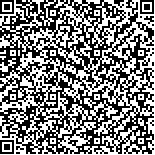本文已被:浏览 210次 下载 116次
Received:January 05, 2024 Published Online:October 20, 2024
Received:January 05, 2024 Published Online:October 20, 2024
中文摘要: 目的 探讨马斯洛需要层次理论指导下集束化护理对腹腔镜胆囊切除术(LC)患者麻醉复苏期并发症的影响。
方法 选取2023年6月至10月于河北省人民医院进行LC治疗的200例患者为研究对象,按照随机数字表法分为试验组(需要层次理论指导下集束化护理方法)和对照组(常规护理方法),每组100例,对比两组患者下床活动时间、排气时间、住院时间、焦虑评分(SAS)、抑郁评分(SDS)、视觉模拟评分(VAS)。应用Kaplan-Meier方法分析麻醉复苏期并发症发生率,应用Cox比例风险模型分析影响LC患者麻醉复苏期并发症的临床风险因素。
结果 试验组患者下床活动时间、排气时间、住院时间均早于对照组(P<0.01)。两组患者干预后SAS、SDS、VAS评分低于干预前(P<0.05),且试验组低于对照组(P<0.05)。试验组患者麻醉复苏期并发症发生率为8.00%,对照组患者麻醉复苏期并发症发生率为21.00%(Log-rank=6.970, P=0.008)。不同麻醉复苏期并发症发生情况患者的年龄、BMI、手术时间、术中出血量、护理方式对比差异具有统计学意义(P<0.05)。单因素Cox回归分析结果显示,年龄(OR=1.063,P=0.009)、BMI(OR=1.202, P=0.031)、手术时间(OR=1.088, P<0.01)、护理方式(OR=4.563, P<0.01)是LC患者麻醉复苏期并发症的影响因素。多因素Cox回归分析结果显示,手术时间长(OR=1.061, P=0.002)、常规护理方法(OR=2.822, P=0.020)是LC患者麻醉复苏期并发症的危险因素。
结论 需要层次理论指导下集束化护理用于LC患者,能够缩短其下床活动时间、排气时间、住院时间,改善负面情绪,减轻疼痛,对减少LC患者麻醉复苏期并发症的发生具有临床意义。
Abstract:ObjectiveTo explore the influence of cluster nursing under the guidance of Maslows hierarchy of needs theory on the complications of patients undergoing laparoscopic cholecystectomy (LC) during anesthesia recovery.
Methods A total of 200 patients undergoing LC in Hebei General Hospital from June to October 2023 were selected as the study objects, and were divided into experimental group (cluster nursing under the guidance of hierarchy of need theory) and control group (conventional nursing) according to random number table method, with 100 cases in each group. The time of getting out of bed, exhaust time, hospital stay, self-rating anxiety scale (SAS) scores, self-rating depression scale (SDS) scores and visual analogue scale (VAS) scores were compared between the two groups. Kaplan-Meier method was used to analyze the incidence of complications during anesthesia recovery, and Cox proportional risk model was used to analyze the clinical factors affecting the complications during anesthesia recovery in patients undergoing LC.
Results The time of getting out of bed, exhaust time and hospital stay in experimental group were earlier than those in control group(P<0.01). The scores of SAS, SDS and VAS in two groups after intervention were lower than before intervention (P<0.05), and those in experimental group were lower than those in control group (P<0.05). The complication rate of patients in the experimental group was 8.00%, and that of control group was 21.00% (Log-rank=6.970, P=0.008).There were statistically significant differences in age, BMI, operation time, intraoperative blood loss and nursing methods among patients with complications in different anesthesia recovery stages (P<0.05). Univariate Cox regression analysis showed that age (OR=1.063,P=0.009), BMI (OR=1.202, P=0.031), operation time (OR=1.088, P<0.01), nursing mode (OR=4.563, P<0.01) were the factors affecting the complications during anesthesia recovery in patients undergoing LC. Multivariate Cox regression analysis showed that longer operation time (OR=1.061, P=0.002), routine nursing method (OR=2.822, P=0.020) were the risk factors of complications during recovery from anesthesia in patients undergoing LC.
Conclusion The application of cluster nursing under the guidance of hierarchy of need theory in patients undergoing LC can shorten the time of getting out of bed, exhaust time and hospitalization time, improve patients negative emotions and alleviate patients pain, and has clinical significance in reducing the occurrence of complications during the recovery period of anesthesia in patients undergoing LC.
keywords: Hierarchy of needs theory Cluster nursing Laparoscopic cholecystectomy Complications during recovery from anesthesia
文章编号: 中图分类号:R473 文献标志码:B
基金项目:河北省医学科学研究课题计划(20230410)
引用文本:
